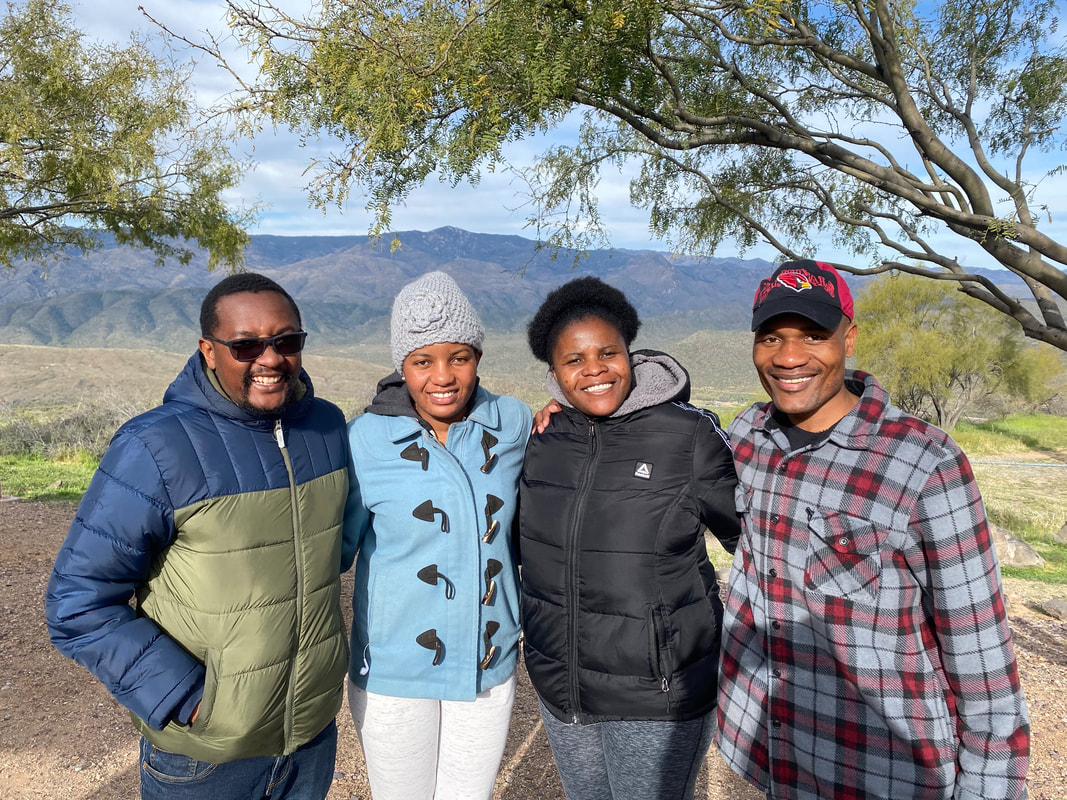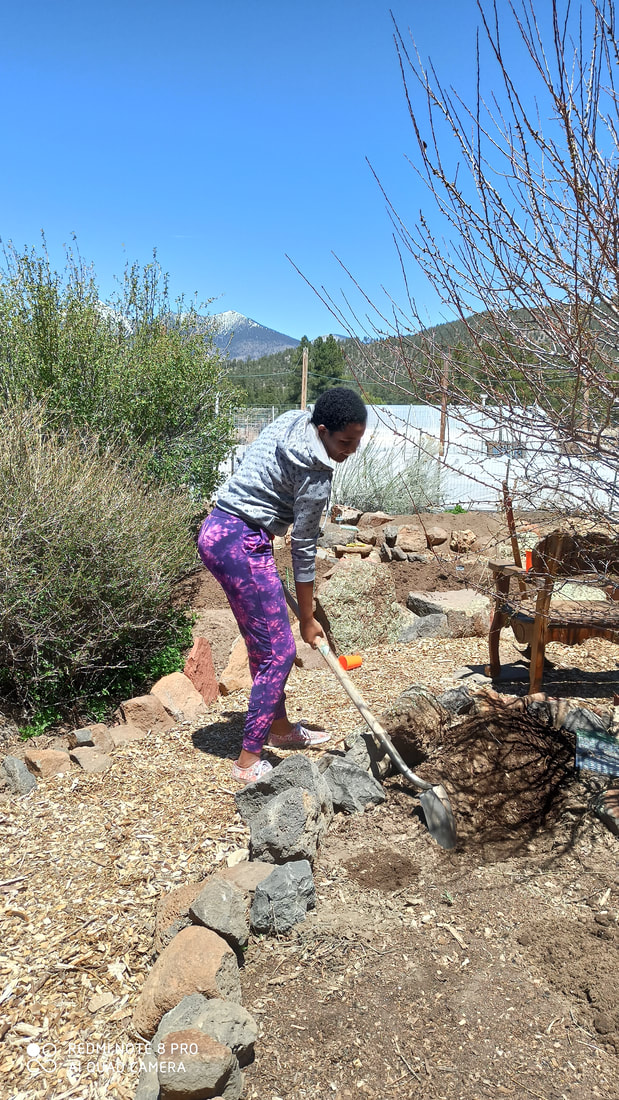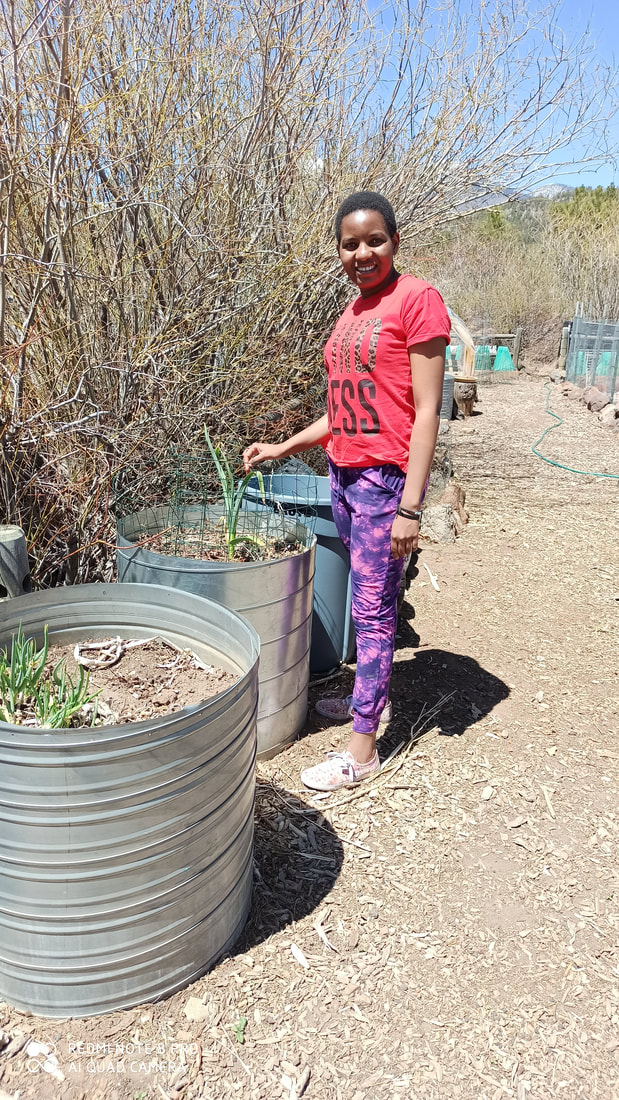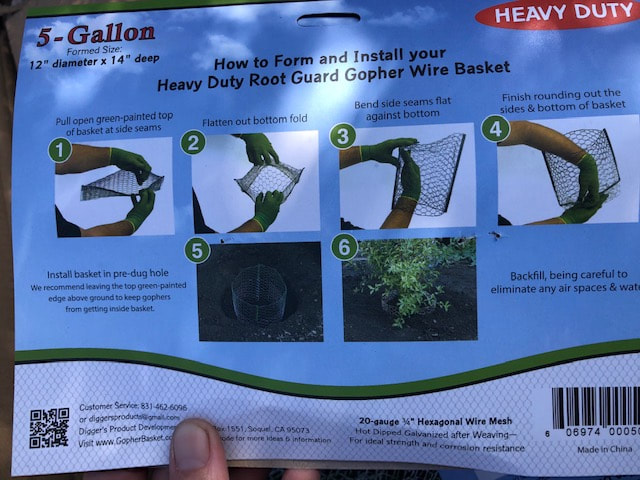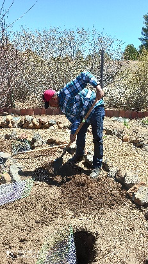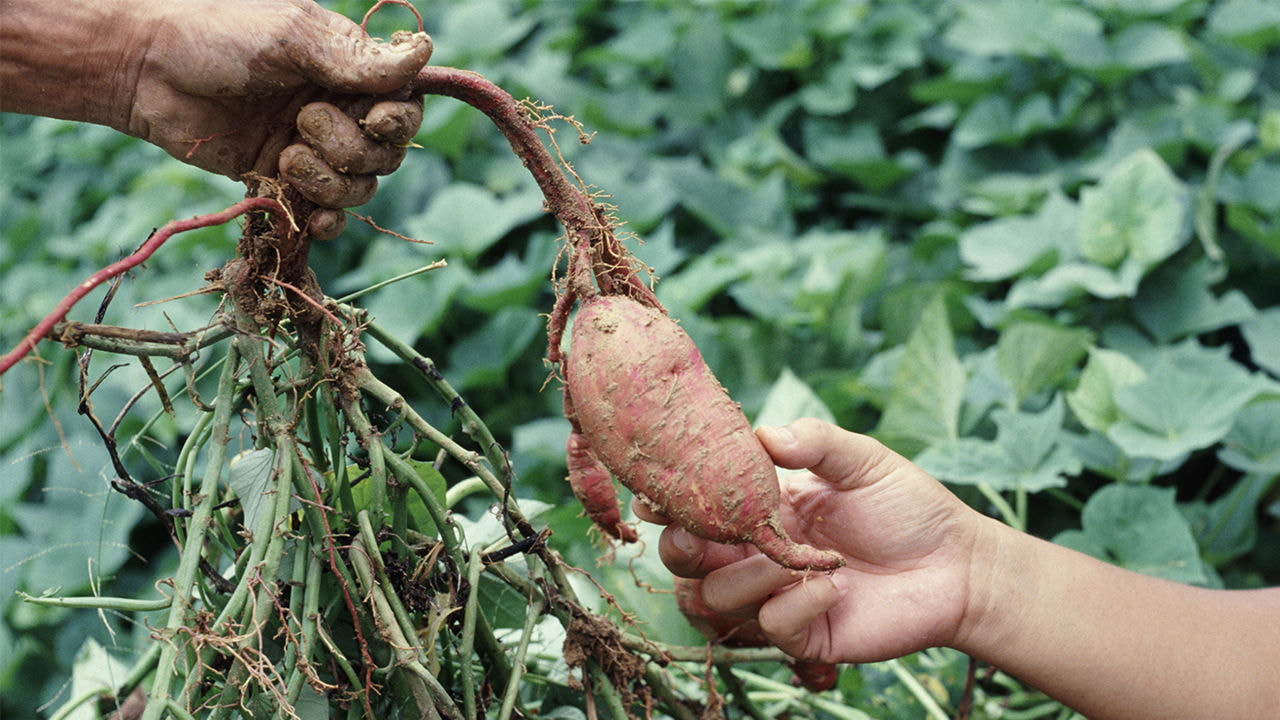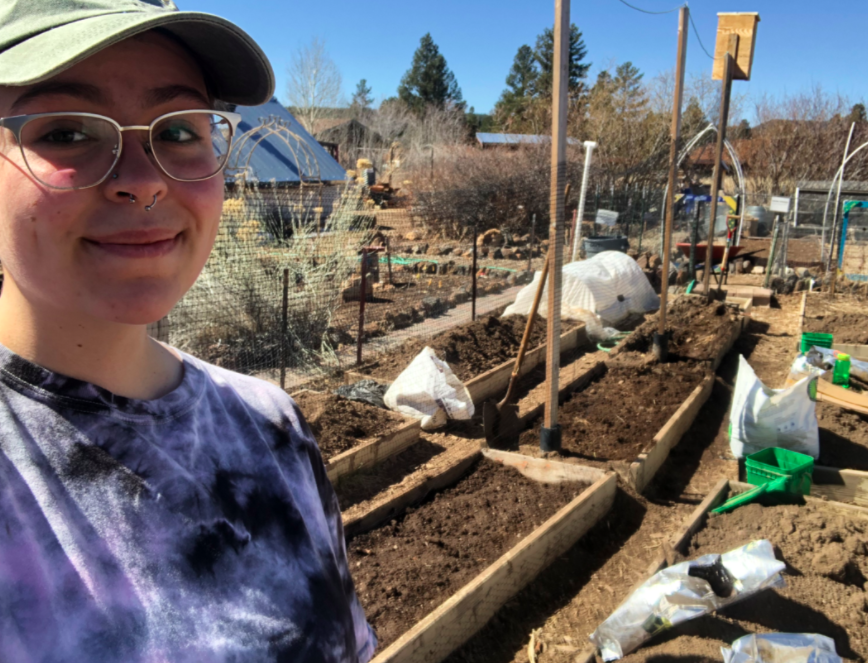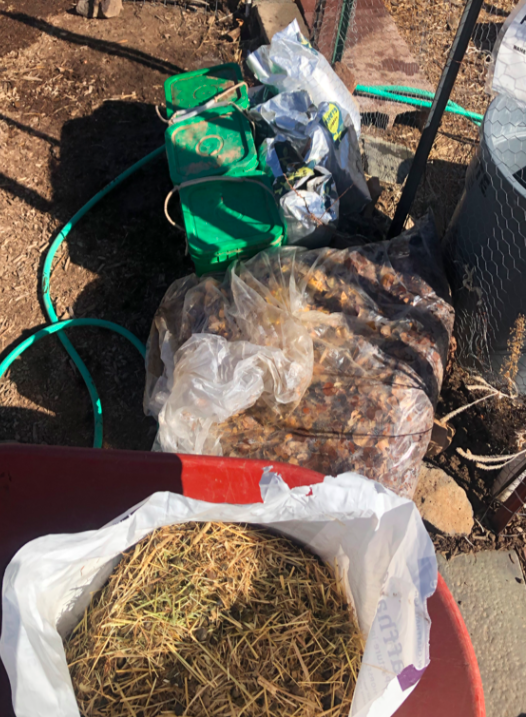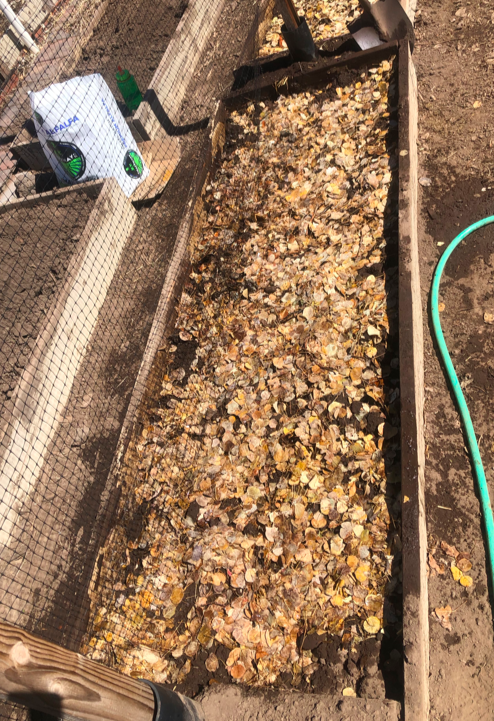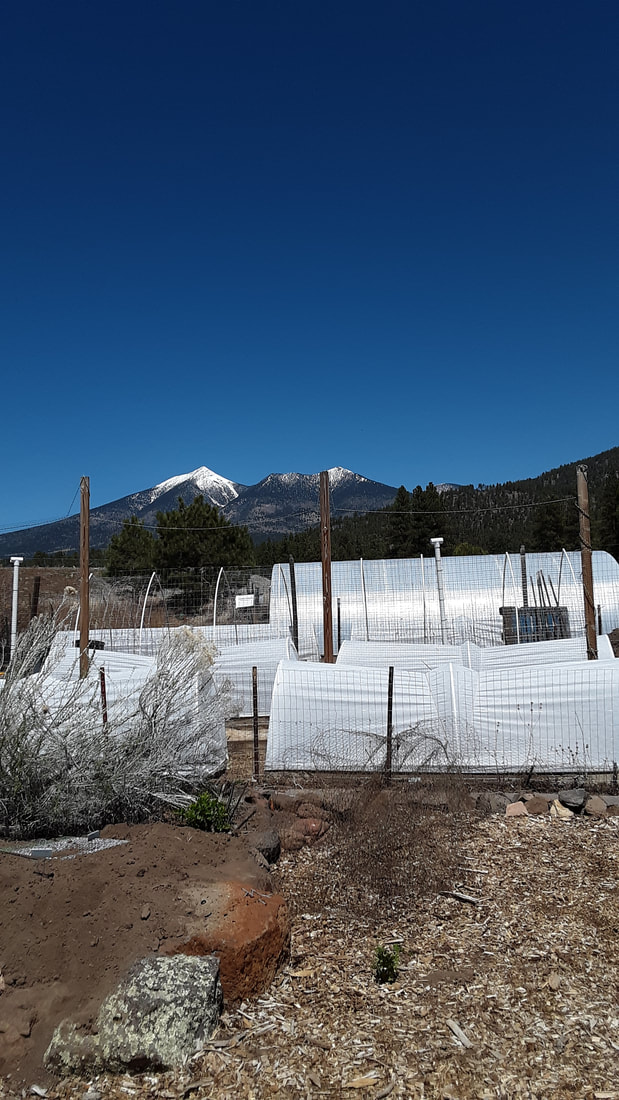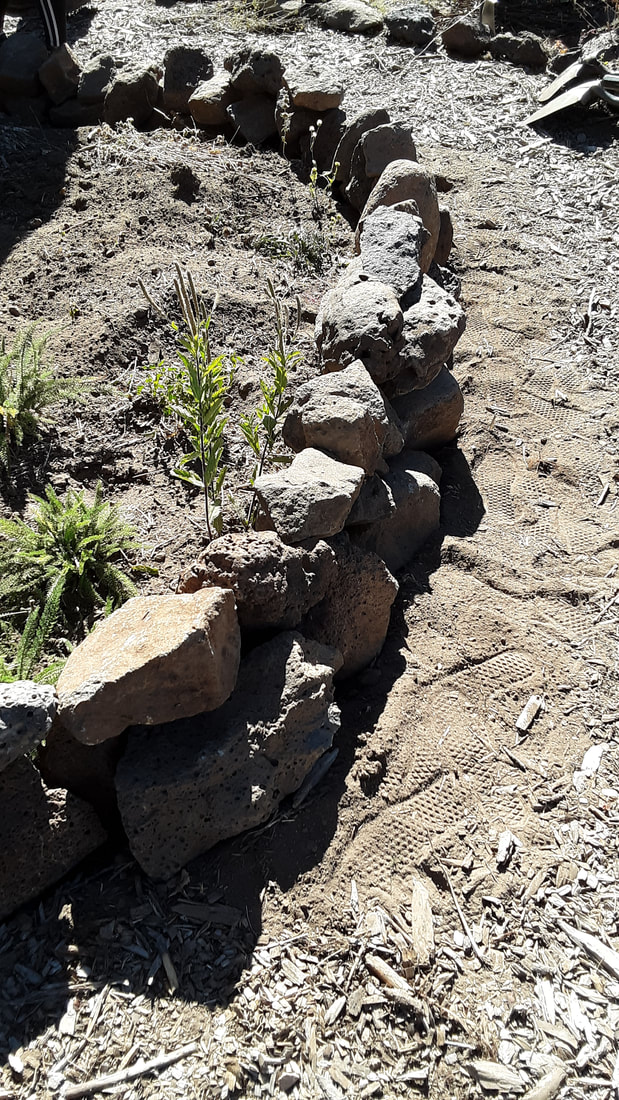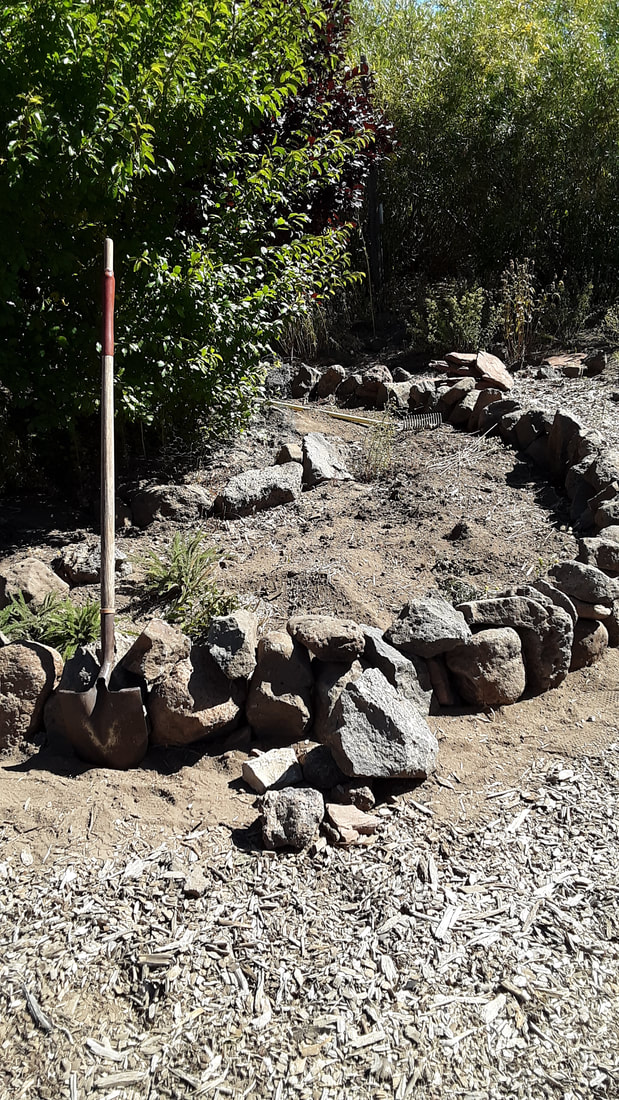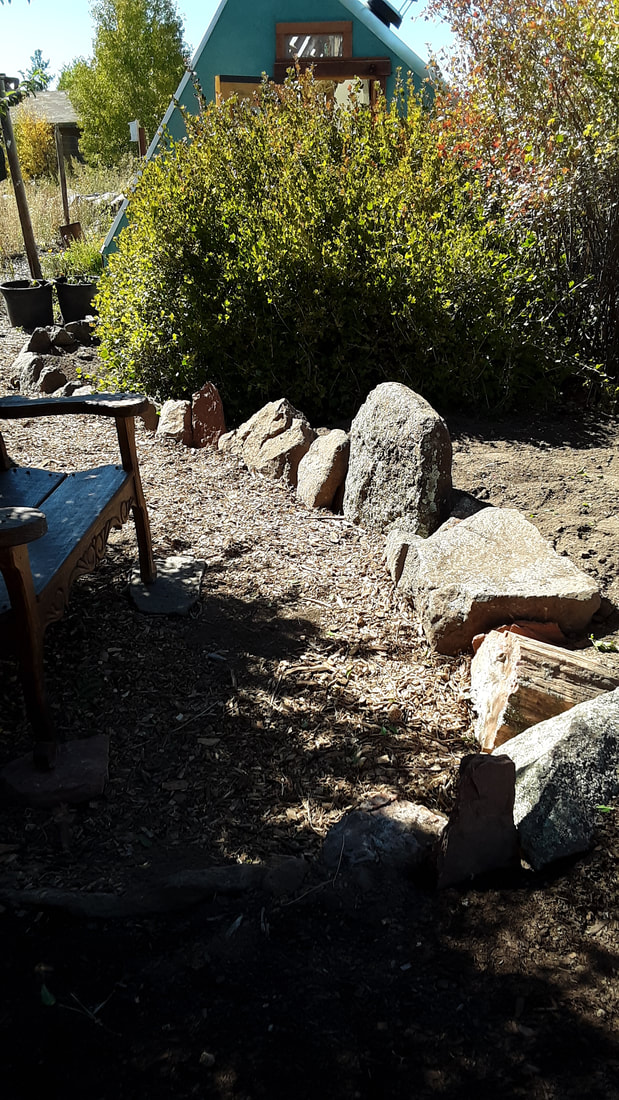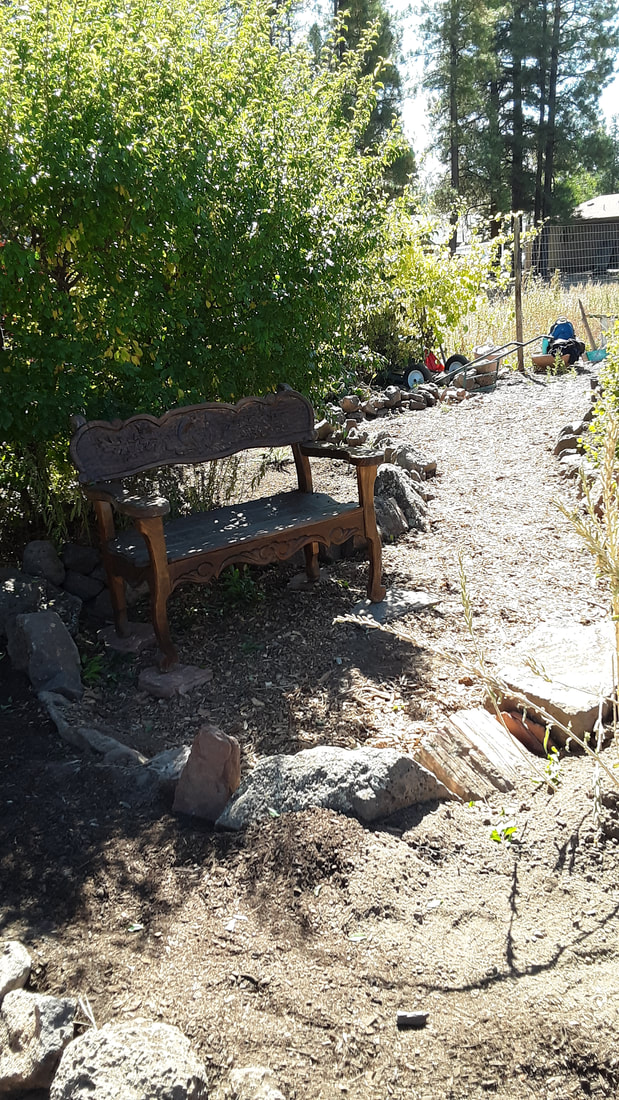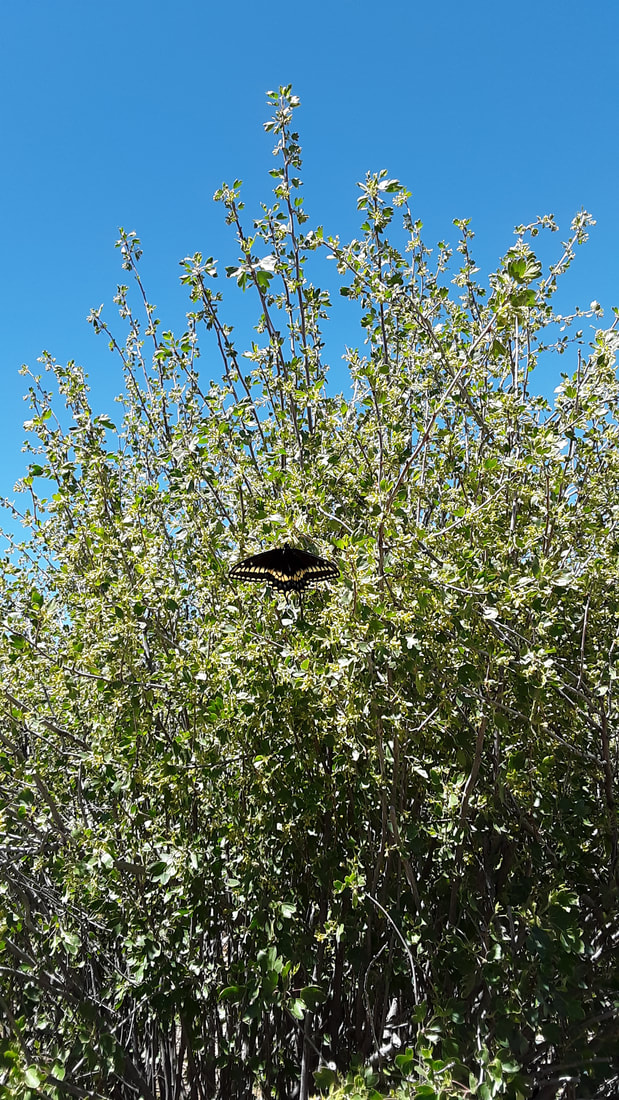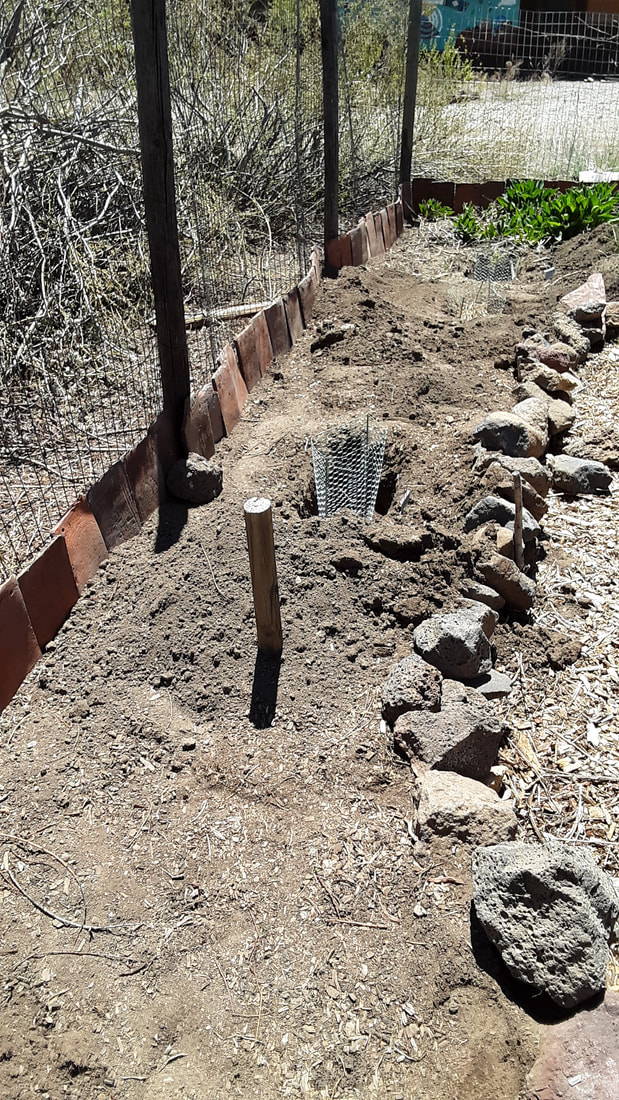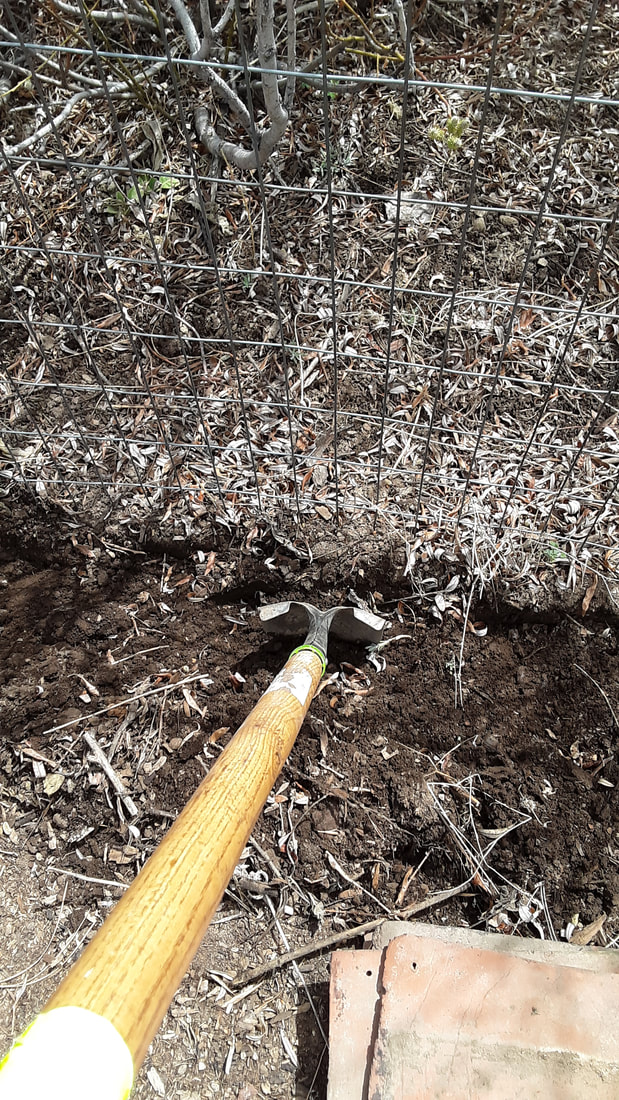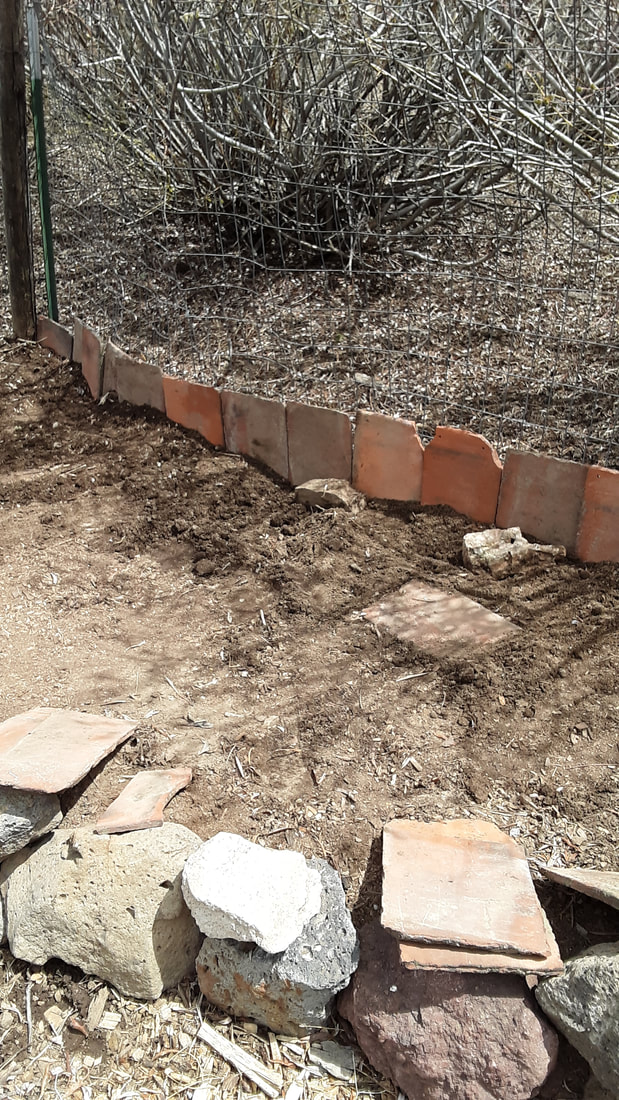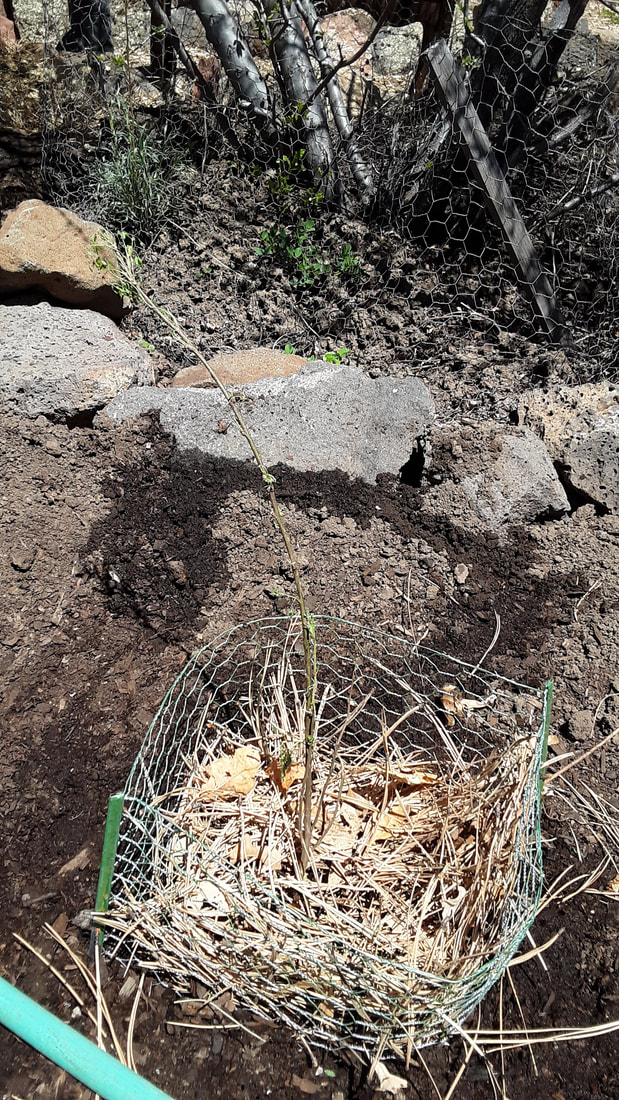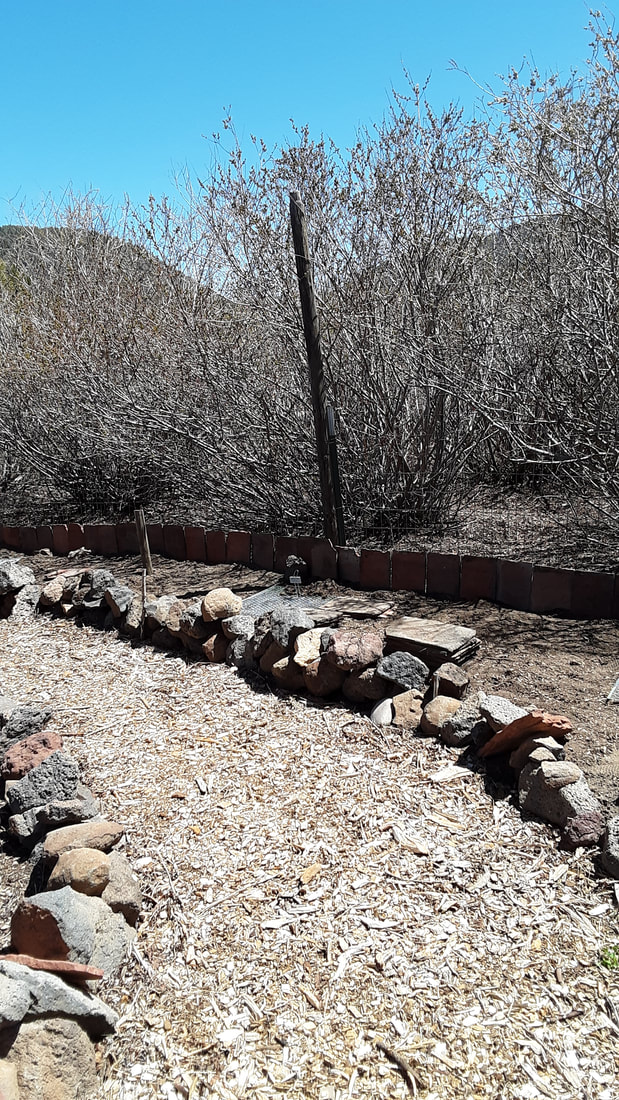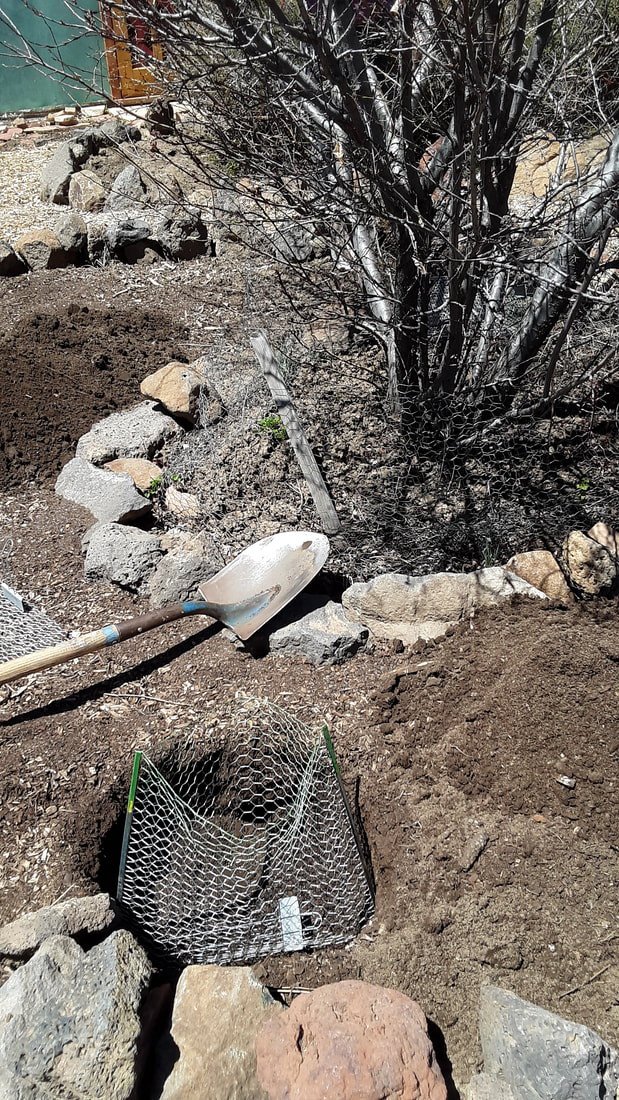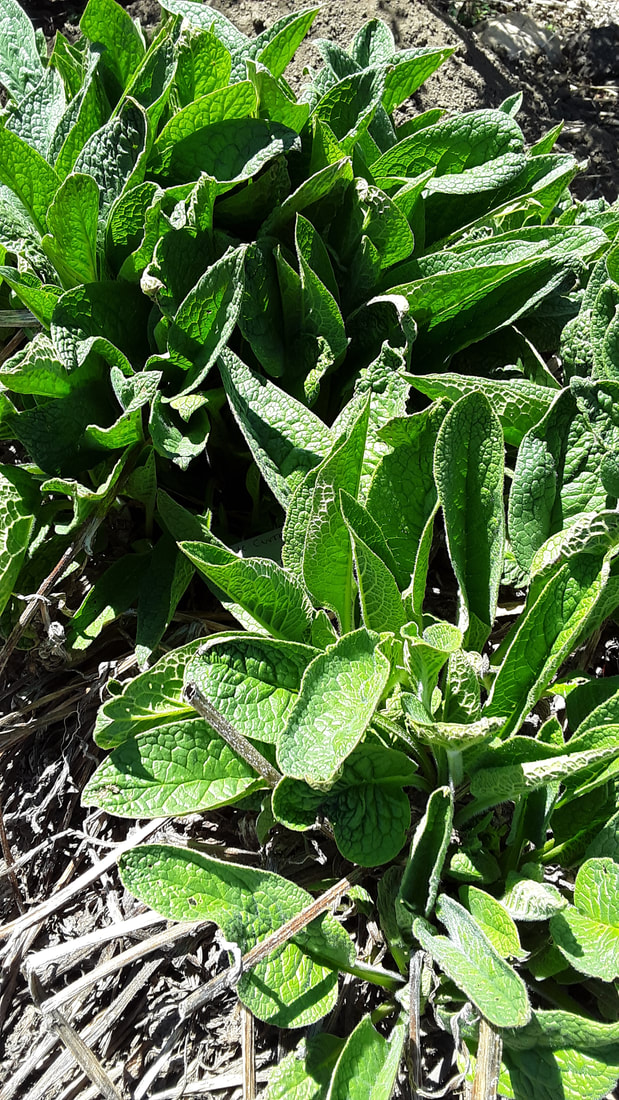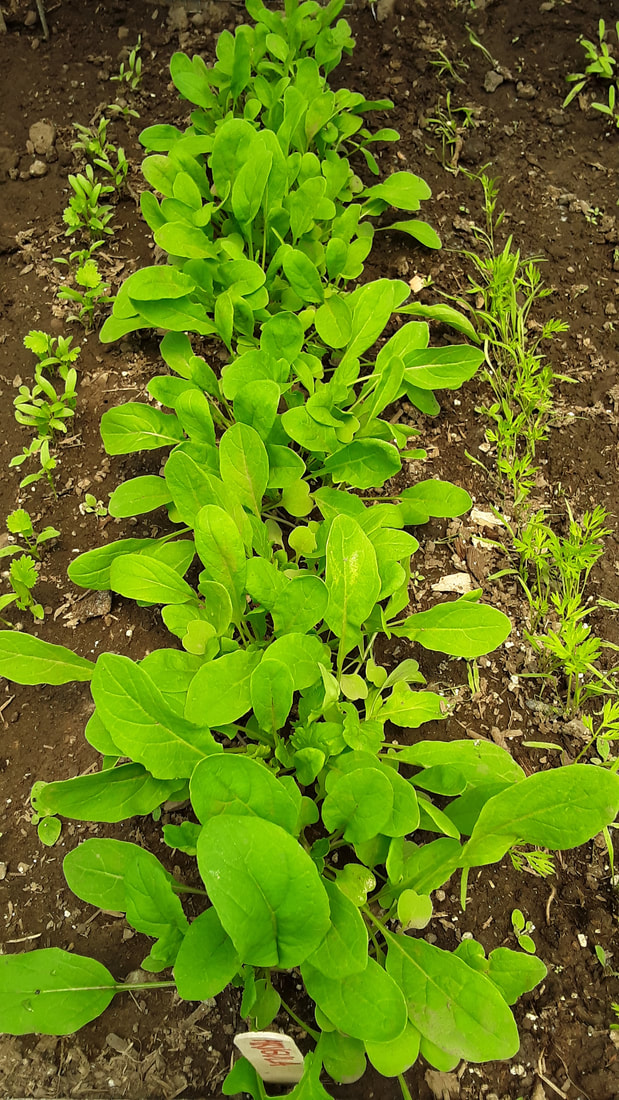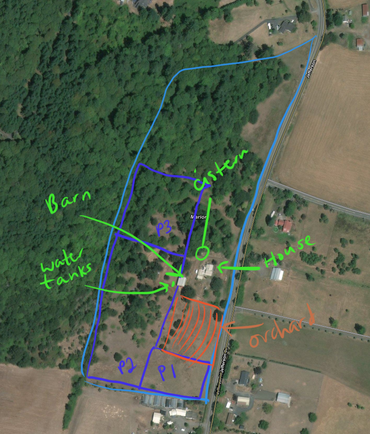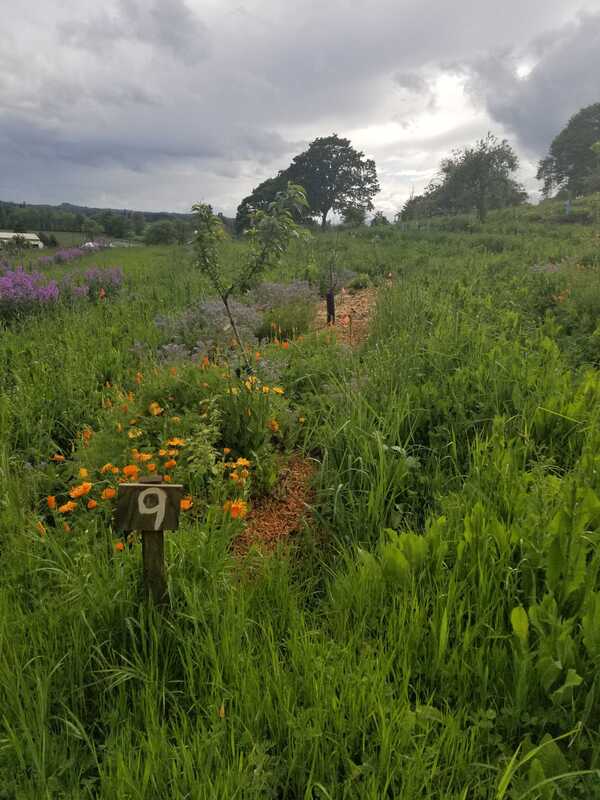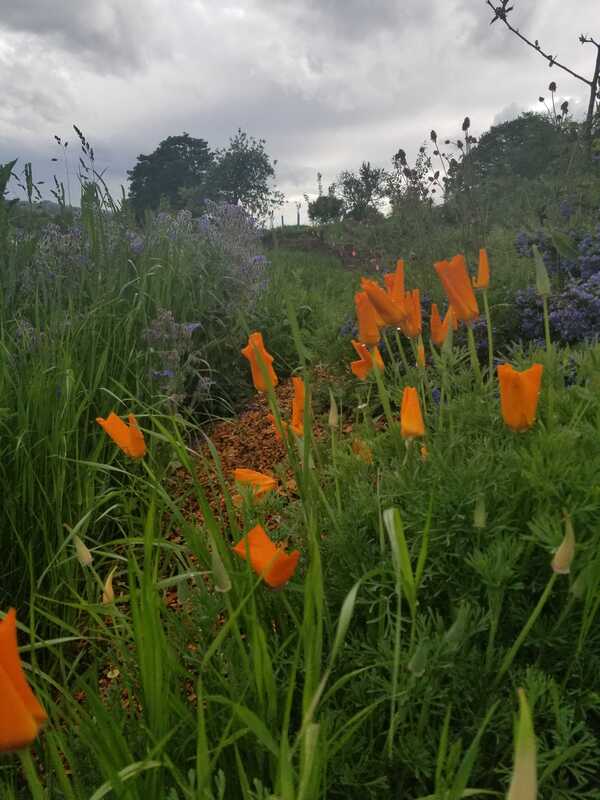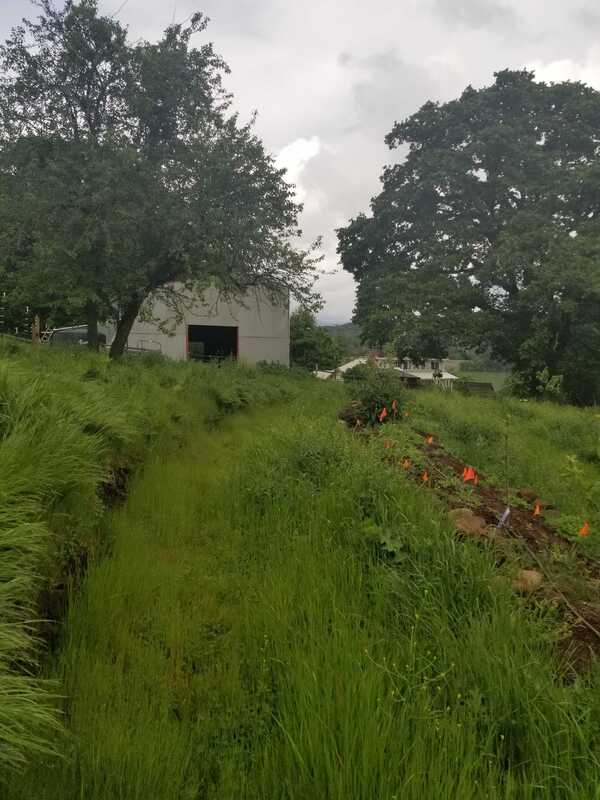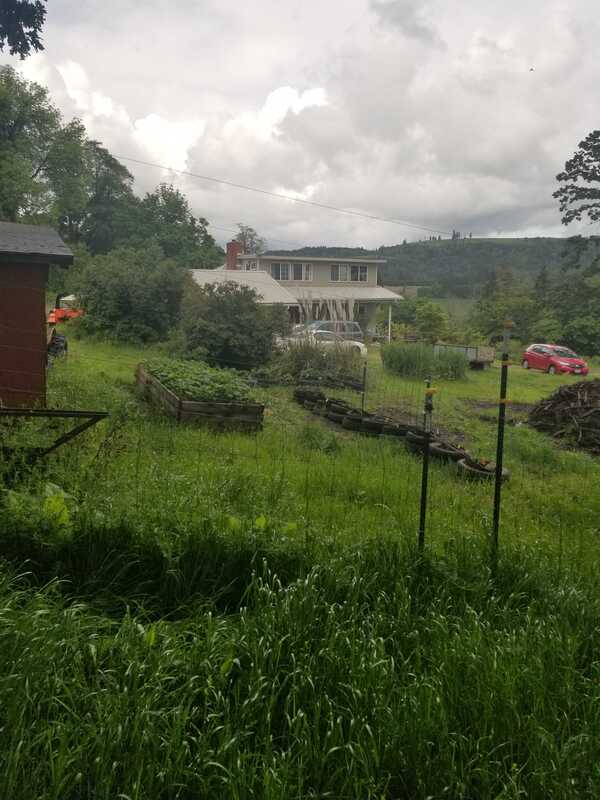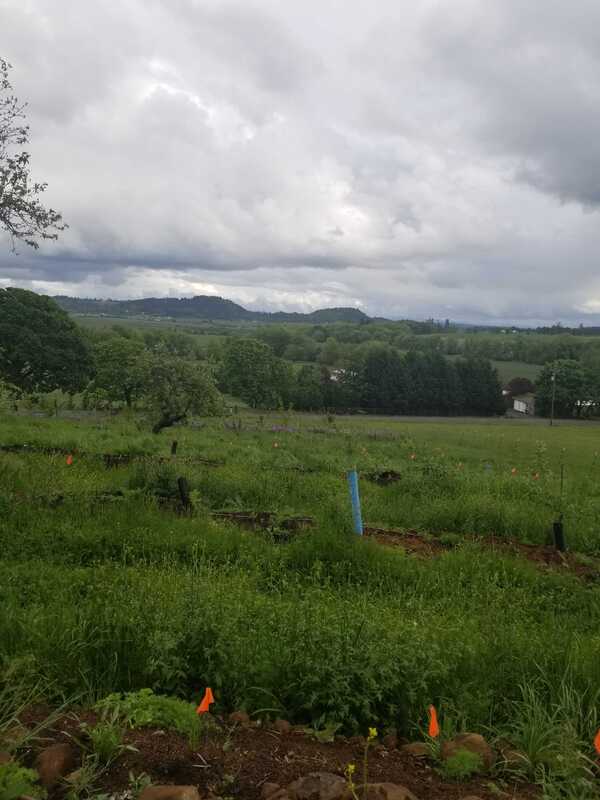Rosemary LoganCheckout the Spring 2020 section of NAU's two-semester Permaculture Design Course Blog! Archives
December 2023
Categories |
Back to Blog
Three Malawians at Colton Garden5/4/2020 Albert Einstein said and we quote, “Never regard study as a duty but as an enviable opportunity to learn to know the liberating influence of beauty in the realm of the spirit for your own personal joy and to the profit of the community to which your later works belong." This was fully manifested when Richard, Shonduri, and I visited Colton garden. It was a normal Friday and as usual in our trio, we decided to visit Colton garden to fulfill the volunteer hours for our class. Colton garden which is Located at 700 feet at the Museum of Northern Arizona (MNA) in Flagstaff, the Colton Community Garden (CCG) is an inspiring space for showcasing high elevation growing strategies and the bio-cultural diversity and heritage of the area. At the heart of the CCG’s mission is to generate, restore and inspire movement towards a more vibrant, resilient and sustainable food system in alignment with MNA’s mission which is to “inspire a sense of love and responsibility for the Colorado Plateau.” We took off at the downtown connection center heading towards Colton garden. Once arriving safely at the garden, we were greeted by Rosemary and Garrod. Rosemary took us to a little tour of the new permaculture food forest section of the garden. Our initial thought was that it this project would be like normal work like we do in Malawi, digging up the soil or mixing the soil with compost and planting trees. It was during the orientation where we learned a different series of challenges with growing at high elevation in an arid landscape- a climate quite different from Malawi. Colton garden faces the usual challenges of growing at high elevation and navigating vermin such as an adjacent prairie dog’s colony and a healthy population of gophers. Despite these challenges the garden has grown exponentially in annual crop production and volunteer participation. In contrast to prairie dogs and gophers, Malawi faces a challenge of termites. These termites attack the roots of the plants. Malawi being a tropical country, has a hot and rainy season from mid-November to April but due to climate change, some areas experience drought whilst other areas experience floods. Due to these challenges, sometimes it is hard to grow crops. A lot of farmers who live in the areas that are affected by drought opt to grow perennial crops like sweet potatoes, and cassava. The leaves of these perennial crops are used as relish. As we started digging the soil, we were surprised to find the chicken wire at the bottom. That was the time we learned about one of the great lessons in the garden. Rosemary explained that there are both gophers and prairie dogs in the area. So, the chicken wire prevents them from attacking the roots of the trees and other annuals. This was the first time we learned of such a simple but innovative way to prevent these animals from attacking the roots of the trees. In this process there are no chemicals applied to the soil, as a result, leaving the soil in its original form permitting microorganisms to breed in large volumes. Other non-organic strategies might involve something like poisoning the gophers and prairie dogs which could be detrimental to the soil and larger ecological health. Other organic ways to control gopher populations include both trapping and inviting predators such as snakes, hawks or owls to the garden. In Malawi, most of the times, the Agriculture Extension Development Officers advice farmers to spray chemicals as one of the ways of dealing with termites. In some cases farmers use ashes who can not afford chemicals use ashes, but this method is less effective because the ashes do not terminate the source of the termites, they only kill those termites that are visible. We continued digging the holes and we managed to dig up to more than 15 holes in readiness for fruit trees which will later be arriving in an order by mail. In each of these holes we placed wire baskets to protect the roots of the trees/shrubs from the gophers. These baskets were called “Root Guard” While these baskets can also be made by hand with leftover wire materials, the funds from permaculture garden fundraiser in December made it possible to purchase these handy baskets. At the end of our work we decided to take a larger tour around the garden. We were amazed by how the land has been effectively been put into use. The demarcations for each crop were marvelous and well thought of. It was obvious that there is so much care that is being put into the land to make sure that it bears the intended fruits. We were astonished by the investment that was done on a small piece of land. The garden is being looked after very well; an indicator to us that people are connecting well with nature. Key reflections that we made after working in the Colton garden included:
Recipe for pumpkin leaves Ingredients 2 lb pumpkin leaves 1big very ripe Tomato 1tsp Salt 6 cups Water 1 cup Groundnut/peanut flour Method Wash the pumpkin leaves and break of the stem and pull of the silk from the pumpkin leaves. Do one leaf at the time and chop them Boil 1cup of water and add salt, Cook the leaves in boiling water for 5-10 mins and add the groundnut flour and the diced tomatoes and simmer for 5-10 mins until tender. Recipe of sweet potato leaves
Ingredients 2 lb Sweet potato leaves 1big very ripe Tomato 1tsp Salt 6 cups Water 1 cup Groundnut/peanut flour ½ Lemon Method Wash the sweet potato leaves and shop them Boil 2cups of water and add salt, diced tomatoes and lemon juice Cook the leaves in boiling water for 5-10mins and add the groundnut flour and simmer for another 5 -10mins until tender.
0 Comments
Read More
Back to Blog
Colton Community Garden is located at the Museum of Northern Arizona (www.musnaz.org). The garden is entirely volunteer based and most projects and planting is done in a collective effort. There is a solid group of dedicated volunteers, most notably being Carol Fritzinger. She has been appointed the Garden Manager and has revitalized the Colton Community Garden and made the garden a really special place to be.
I am able to have a compost bin at my house, but not a whole system in the back yard. Because of this, I deliver my compost to the Colton Community Garden. Turns out, Fritz needed help with converting three more garden beds into lasagna beds. I was semi-familiar with lasagna beds, but I had never built one before. The awesome aspect about lasagna beds is that they are essentially ready-made compost beds that can be directly seeded and transplanted in. There is no strict formula for constructing a lasagna bed, but in general, “brown” and “green” materials are layered, like a lasagna casserole, over a heavy layer of organic material such as cardboard and newspaper. Brown materials are high in carbon and can consist of dried leaves, mulch, and straw or hay. Green materials are high in nitrogen and can include fresh yard and kitchen waste as well as manure. You ~can~ get super technical about it, but plants LOVE carbon and nitrogen, so its no biggie if you don't follow an exact science. The process for building these specific lasagna beds went as follows: I dug out the current beds, carefully saving the existing soil. Then, I removed the plastic from the cardboard box and placed them on the bottom of the bed, followed by enough water to thoroughly soak the cardboard. A layer of soil was added. I then put a few containers of raw compost and followed with another layer of soil. Next, I dumped coffee grounds from Starbucks in the bed, also followed by soil. The next few layers of brown and green material consisted of leaves and animal manure, separated by layers of soil. Once the bed was full and topped off with soil, a burlap covering was placed over the exposed soils to prevent erosion and the loss of soil. Working at the Colton Community Garden and helping Fritz with installing lasagna beds has so much potential impact on the garden. Soil made in lasagna beds is packed with carbon and nitrogen, which plants thrive from. Produce grown in these beds will have higher yields, grow stronger, and will serve more people than produce grown in regular garden soil. The impact the community gardens and composting can have in the world is insurmountable. We can heal social and ecological connections by composting and gardening as a community. Happy Gardening!!! <3 -Pamela Hobbs-Laventall
Back to Blog
By Garold Johnson The Colton Community Garden is situated on the research side campus of the Museum of Northern Arizona with a fantastic view of the San Francisco Peaks. It is over 100 years old. The museum founders Harold and Mary-Russell Ferrell Colton fostered this garden's development. What makes the garden unique is that it is an outside demonstration site for growing in a high elevation, arid environment. I started volunteering with watering the plants in the Colton Community Garden in Fall 2019 and will continue to do so. I'm am happy that I am doing more in the garden this spring. Currently, I am involved with the Permaculture Demo Site. Various tasks include pruning, laying compost, eating excess greens, watering, planting plants and trees, developing a prairie dog-proof tile fence, and anything else. In the fall, our class made did the earthworks to prepare the space for spring planting. This involved giving shape to a new garden with rockwork and beginning the process of building soil. We laid wood chips for walking on, put in a cool chair where people can sit and relax and added a beautiful arch to the entrance.
Back to Blog
By Abby Lundberg Over the past two years, my brother Jeremy and his wife Casey have worked hard to set up a permaculture-based orchard on their land near Salem, Oregon. I want to share some of the big picture site-mapping information about their land and showcase a little of the tremendously beautiful space they're cultivating. About the property: features, soil, and zones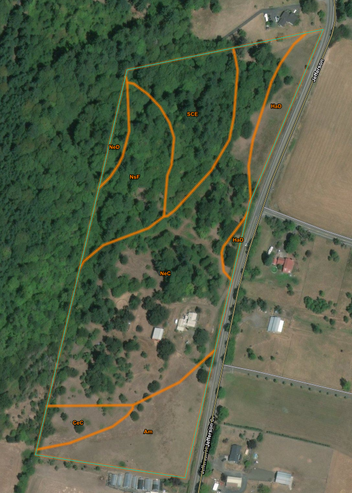 This aerial image from the USDA Web Soil Survey Tool shows that the main portion of the property under cultivation is predominately either classified as “NeC” (Nekia silty clay loam; big section in the middle where the buildings are) or “Am” (Amity silt loam; bottom right corner). Amity silt loam, which covers most of the pastureland, is terraced land that retains water, while Nekia silty clay loam is well-drained soil that occurs on the footslope of hills and has a layer of clay under the soil. The differences in how well the soils drain and how much clay they have impacts what kinds of plants grow. For instance, there are no trees in the the Amity silt loam section, perhaps because the trees (oaks in particular) don’t tolerate standing water very well. I’ve noticed that there is a wider variety of grasses in the “Am” section than on the dry slopes above; this seems to suggest the grasses in this area are adapted to somewhat-marshy climates.
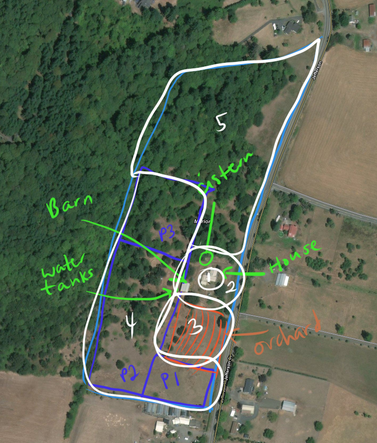 Zone 1 is the area that gets the most foot traffic and immediately surrounds the house, woodshed, and garage, while Zone 2 includes the front yard and barn. Zone 3 is predominately the orchard (though there are times when the orchard is probably also Zone 2 because of the amount of work it requires). Zone 4 includes pastureland, and Zone 5 is mostly forested areas that don’t see much traffic (unless it’s blackberry season). So what does it look like? (Spring 2020)Most of the plants are still pretty young, so especially at this time of year it can be hard to even spot the trees over the grass and flowers! The orchard rises up a soft slope with trees planted into hugelkultur mounds that follow the contours of the land. An annual ground cover mix fills the space between rows. Among the fruit trees there are a variety of small bushes, and flowers like California Poppies, Borage, and Dame's Rocket. (Dame's Rocket is invasive, but so are we! I won't hold that against it. It feeds butterflies and can be eaten by people.) Looking toward zone 1 (house) and zone 2 (barn and yard) from the orchard. This is close to the top of the orchard slope, and this height is where the soil type changes to NeC and oak trees grow, such as the very large one on the right in the first picture. The second photo shows the edge of the chicken house, a raised bed for strawberries, and tires with tomatoes planted in them that have a cattle panel for the tomatoes to be tied to as they grow. Looking down the orchard rows doesn't look like much, but the trees are still small. Someday they will grow big enough to obstruct the beautiful view!
|
 RSS Feed
RSS Feed
